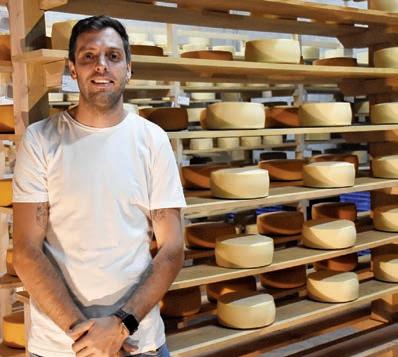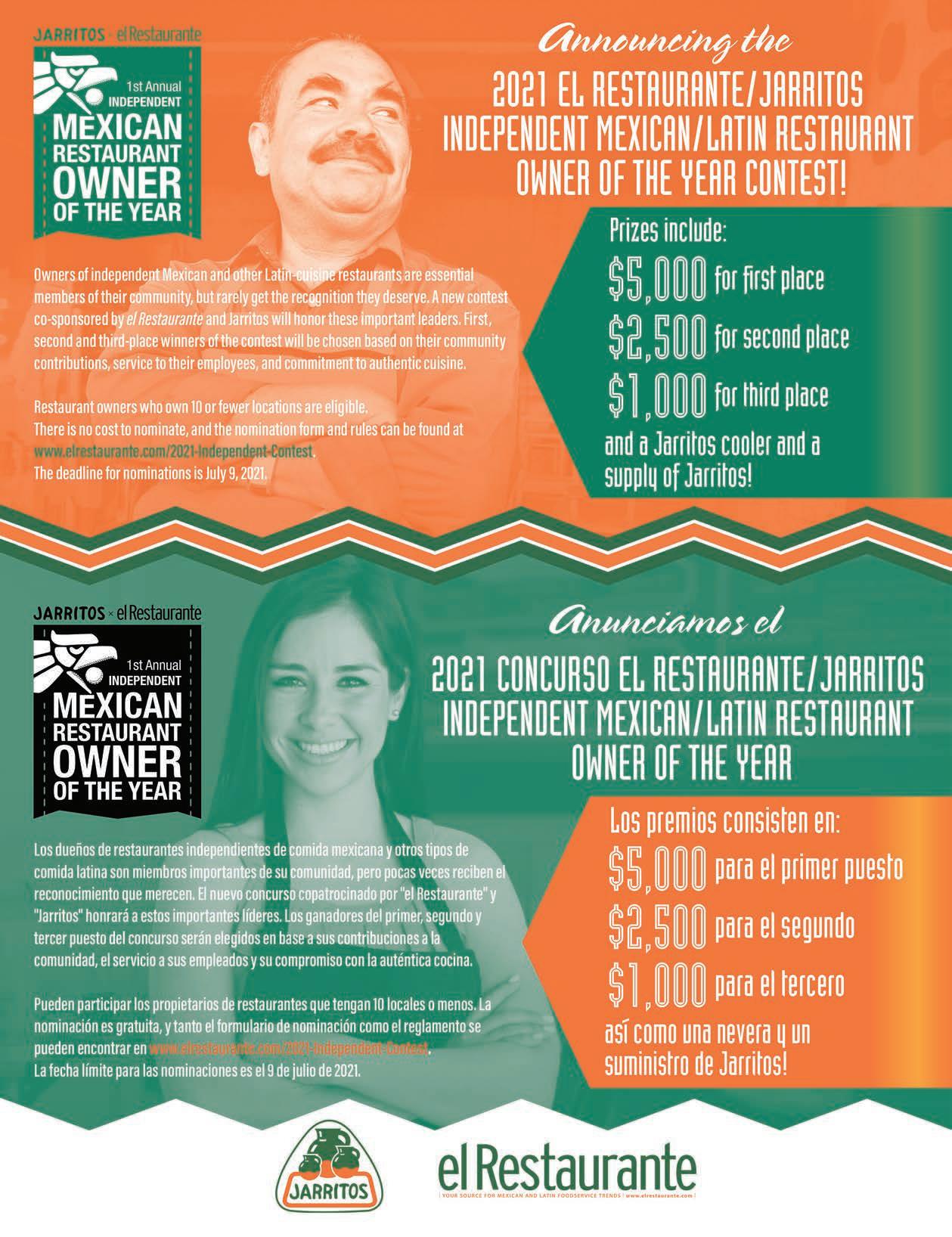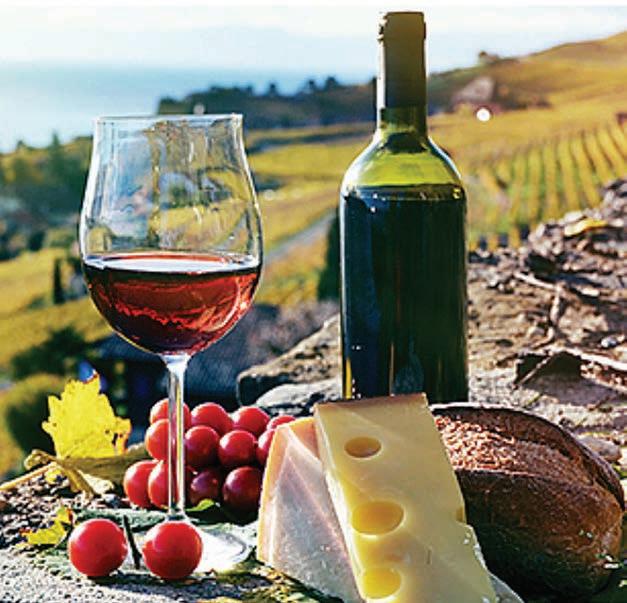
18 minute read
FROM MEXICO — Wine Shines in Querétaro
| BY JOSEPH SORRENTINO, writing from Mexico | When thinking about where the best vintages of wine are produced, Mexico probably isn’t the first place that comes to mind — even though, historically, the country is the oldest wine-making region in the Americas. Spanish conquistador Hernán Cortés, who overthrew the Aztec empire and won Mexico for the crown of Spain, didn’t like the wine made from indigenous grapes growing in Mexico. To solve that problem, he ordered some Spanish settlers to plant grapevines — a move that ultimately caused such a dramatic decrease in Spanish wine imports that Spain’s King Charles II banned wine Wine shines in Querétaro making in Mexico, except for sacramental wines. The ban was lifted after the Mexican War of Independence in 1821, but Mexico’s wine inEDITOR’S NOTE: Querétaro, a state in dustry continued to languish. north central Mexico, is becoming a key Until somewhat recently. stop for culinary travelers thanks to its Many wines from Baja, California — the area that growing inventory of locally proproduces about 90 percent duced wines. Here, el Restaurante of the country’s supply — contributing writer Joseph have become well-known, Sorrentino shares what well-respected vintages. And he learned as he traveled Querétaro, a state in northQuerétaro’s Art, Cheese and central Mexico where few Wine Route (also known as the wineries existed until the Querétaro Wine Region), home 1970s, when Redonda and not only to myriad wineries, but Freixenet built wineries, has to artisan cheese factories, too. been getting some well-deserved attention for its wines, too. Now, there are more than 40 wineries in the state, and most are expanding.
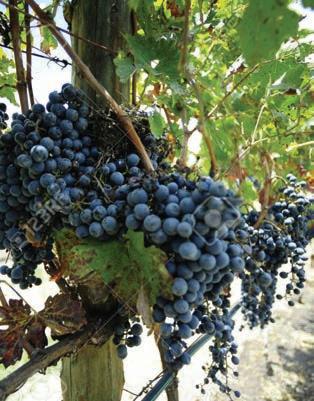
CHALLENGE = OPPORTUNITY IN THE VINEYARDS
On the surface, Querétaro doesn’t seem like a great location for a vineyard, according to Tom Pence and his wife Tiffany Pence, a wine rep from the U.S. who relocated to Querétaro with Tom three years ago. Tom has worked in the wine industry since 1988; together the couple have 37 years experience in the industry.
First, there are the harvestseason rains, which cause mildew and decrease the sugar in the grapes, affecting alcohol content and flavor.
“A lot of years, 30 percent of the harvest will be lost to mildew,” says Tom.
Second, there are the large, volcanic rocks that make vines struggle to grow, and

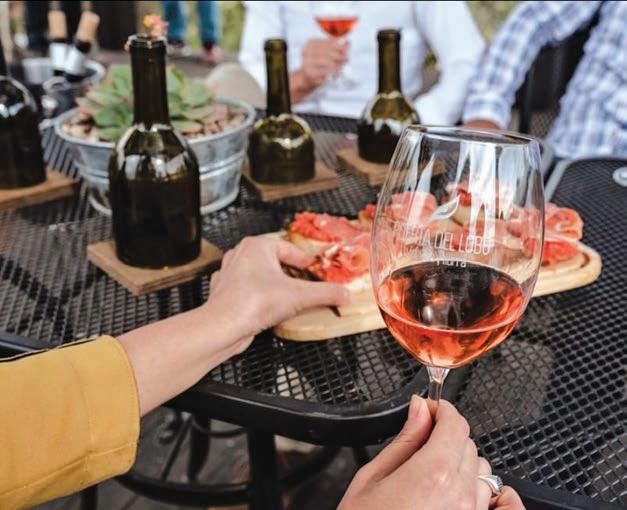
result in smaller grapes.
Finally, the region has big temperature swings during the growing season: 80˚F during the day to the low 50˚s at night
Those working the vineyards see the challenges as more than hindrances. In fact, Andrea Morena Durán, a manager of Vinaltura winery, where grapevines were first planted in 2014, considers them a benefit.
“White wines and sparkling wines do the best because of the rain and the acidity of the soil,” says Durán. ““We do small fermentations for higher quality. We have extreme weather and high acidity, and this is what gives Querétaro wines their specialness.”
Vinaltura produces around 40,000 bottles of wine each year, including whites such as sauvignon blanc, chenin blanc, and riesling, plus two rosés and six red wines, which are aged for 12 months in French or American oak barrels and at least six more months in their bottles. Vinaltura has a small restaurant and also offers tours and tastings.
Tom Pence notes the benefits, too. “Smaller grapes have a lower ratio of skin to juice. This will lead to a more intensely flavored wine... wines that are more elegant, have nicer acidity, more classically European in style,” he explains.
And what about the temperature swing?
“This causes the sugar level to go way up during the day while acidity plummets and at nighttime the sugar level goes down and acidity goes back up,” Tom Pence says. “That recovery period produces wines that have more complexity and also greater acidity.”
About an hour east of Vinaltura is the Puerta del Lobo, a winery that also includes a four-room hotel, plus two restaurants and a wine tasting area located atop a small hill offering a beautiful view of the surrounding countryside. Puerta del Lobo’s first vineyard, which has about three acres, was planted in 2008 and has cabernet sauvignon, merlot, syrah and tempranillo grapes. A second, larger vineyard — approximately 25 acres — was first planted in 2015 to grow grapes including sauvignon blanc, merlot, malbec and syrah.
“The most interesting wines right now are the whites and rosés,” said Richard Hernández Jiménez, who has been the winery’s sommelier for three years. “We plan on having more reds in
A tasting at Puerta del Lobo’s wine bar

PHOTO BY JOSEPH SORRENTINO
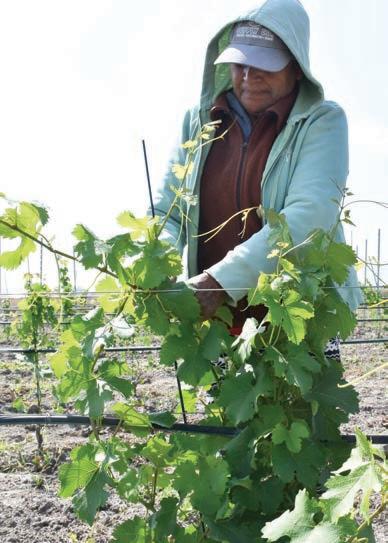
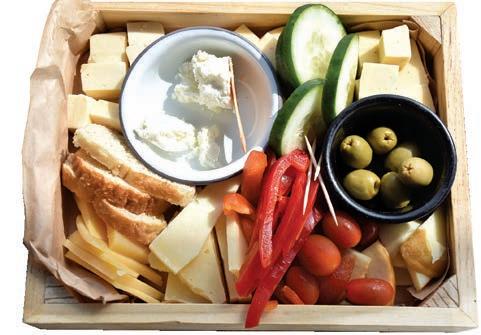
A cheese tasting plate at Bocanegro
SAMPLING CHEESE ON THE ART, WINE AND CHEESE ROUTE
| STORY AND PHOTOS BY JOSEPH SORRENTINO | Complementing Querétero’s growing wine industry are the small dairies producing artisanal cheeses that can be found along Querétaro’s Art, Wine and Cheese Route.
Cava de Quesos Bocanegro, which opened its doors eight years ago, and the three-yearold Queso La Biquette are two of those local producers.
Iñaki Tablado, who ran a sheep farm and cheese-making business in Spain, came to Mexico planning to retire. Plans changed, and he opened Cava de Quesos Bocanegro, initially offering only fresh cheeses.
“We started with the basic Mexican cheeses — quesillo, manchego, queso fresco,” says Yakoe Nicol Tablado, Iñaki’s son and Bocanegro’s manager.
In 2015, they built a darkened cava (cave) below the store and started producing aged cheeses. Today, Bocanegro has 15 to 20 types of cheeses and offers tours and cheese tastings.
“It is a showroom, but it also recreates the traditions from Europe,” says Yakoe of the cave that’s kept at just under 60°F and 85 percent humidity. “Every day, the cheeses have to be turned upside down to ensure proper aging.”
Aged cheeses, he notes, aren’t something typically found in Mexican homes.
“It is hard in Mexico to sell aged cheeses,” he admits. “We are trying to introduce Mexicans to aged cheeses, [which have] the flavors that Europeans really like. I think we are being successful.”
While Queso La Biquette has been open only three years, owner and veterinarian Isabel Esteve Denaives has been a goat owner for 15. “I like goats,” she says when asked why. She had been selling their milk but realized she couldn’t survive just doing that. “It is a little easier to have a business that sells cheese,” she says.
Denaives, who is French-Mexican, spent a year in France to learn how to make goat cheese. And, like those who work at the area’s wineries, she’s introducing something new to the Mexican palate.
“It is not typical in Mexico to have this type of cheese,” she says. “Cheese made from cows is a part of Mexican gastronomy — people cook with those cheeses. This cheese is more for the table.”
La Biquette offers tastings featuring six types of cheese, ranging from the mild queso fresco to aged Tomme, which has a rich, earthy flavor. Although not certified as organic, Denaives said she doesn’t use any antibiotics or preservatives. “Our cheeses are artisanal,” she says. “Everything is made by hand.” Education also plays a role in her business, just as it does at the wineries. “We try to educate Mexicans how to eat this cheese and enjoy it. Thirty years ago, no one ate this type of cheese,” Denaives says. “Now it is more common. People find they like it once they taste it.”
Yakoe Nicol Tablado in the cava the future. We do not have a lot of cabernet sauvignon because the growing season is so long, and the chance of hail is great. It has a thick skin, so that is good, but it takes too long to grow.”
Still, Puerta del Lobo hopes to have its first 100 percent cabernet this year.
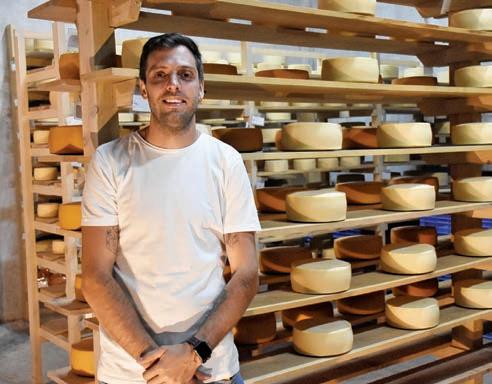
CHANGING PERCEPTIONS
The fact that most Mexicans aren’t accustomed to drinking wine is another hurdle to overcome.
“Mexico is a beer and tequila culture,” says Tom Pence.
The wineries recognize this and are doing what they can to change people’s perceptions.
“Part of my challenge is to educate people and to change their ideas about wine,” says Vinaltura’s Durán. “Mexicans say wine is only for people who know wine. But that is not true. This is why we have Mexican food [at our restaurants] to go along with Mexican wines. I think we are changing the minds of Mexicans.”
Jovana García, Puerta de Lobo’s supervisor of operations, agrees it can be difficult for Mexicans to change their ideas about wine. “Mexicans are very traditional and to open them to new things is difficult,” she says. “We are used to sweets. Dry wine is different. In the Mexican table, the ritual is to have sodas, but we can [learn to]
have a glass of wine.”
At Puerta del Lobo, Jiménez tries to bring people along slowly to get them used to different wines.
“We start with whites, the gentlest ones like sauvignon blanc, which is quite floral,” he says. “Then we will move to rosés made from malbec or syrah.” Despite the challenges of growing wine grapes in this part of Mexico, new wineries are opening, and established ones are expanding — many times learning as they go.
“Some of the challenges we face are technical,” says Michelle Aydelotte, the winemaker at Viñedos Dos Buhos, another business along Querétaro’s Art, Cheese and Wine Route. “Being a young industry, without a lot of historical information to reference or role models to question about their previous experience with vineyards in the area, we definitely blazed the trail. What began as a personal quest to grow high altitude grapes in central Mexico has evolved into the desire to share our success story with as many people possible.”
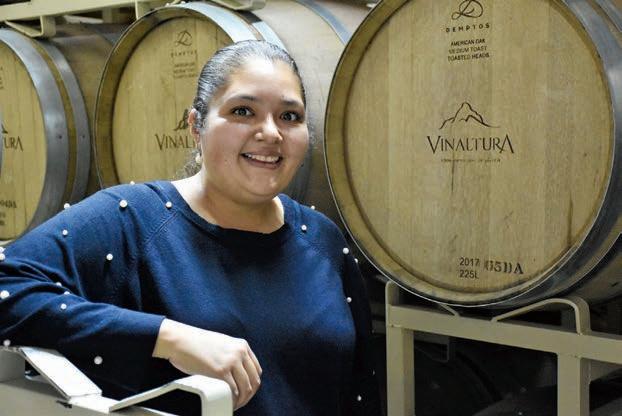
Andrea Morena Durán
PHOTO BY JOSEPH SORRENTINO
– ANDREA MORENA DURÁN, Vinaltura
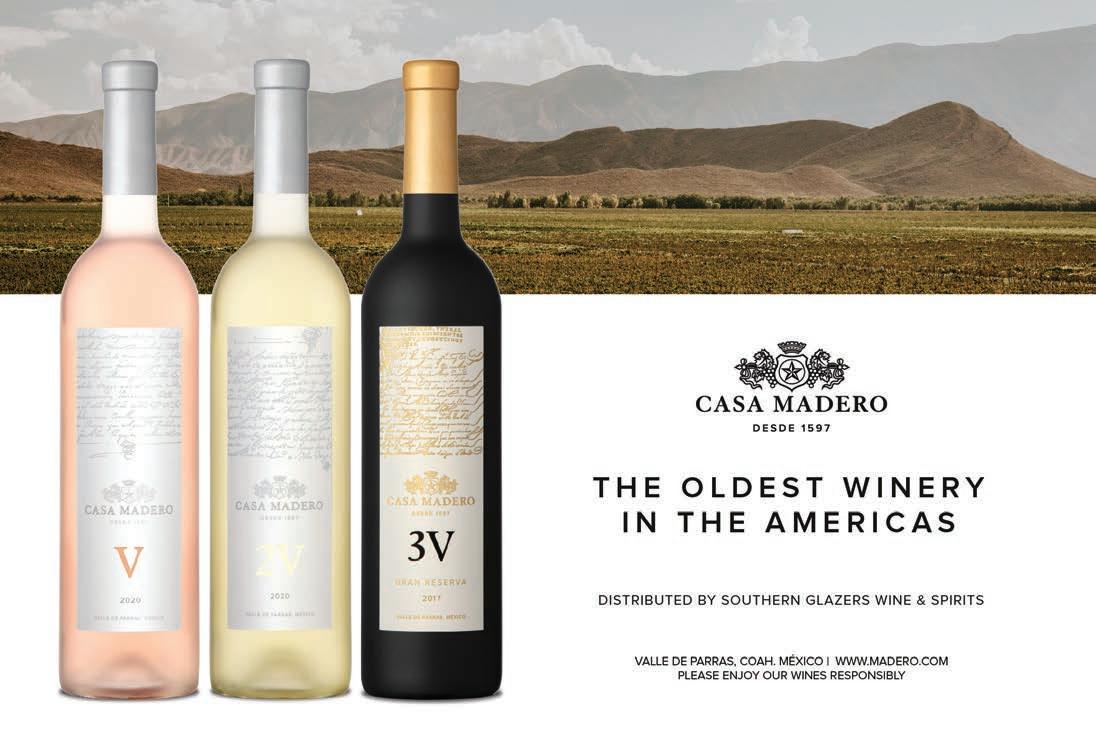

El vino se luce en
| POR JOSEPH SORRENTINO quien escribe desde México | Al pensar en dónde se producen las mejores cosechas de vino, es probable que México no sea el primer lugar que se le ocurra, aunque, históricamente, el país es la región vitivinícola más antigua de América.
Al conquistador español Hernán Cortés, quien derrocó el imperio azteca y conquistó México para la corona española, no le gustó el vino elaborado con las uvas nativas que crecen en México. Para arreglar ese problema, ordenó a algunos colonos españoles plantar vides, una medida que, en última instancia, ocasionó una disminución tan drástica en las importaciones de vino español que el rey Carlos II de España prohibió la elaboración de vino en México, con excepción de los vinos de consagrar. La prohibición se retiró después de terminada la Guerra de Independencia de México en 1821, pero la industria del vino en México siguió sufriendo.
Hasta hace relativamente poco. Muchos vinos de Baja California, la zona que produce cerca del 90 por ciento de la oferta del país, se han convertido en cosechas famosas y respetadas. Y Querétaro, un estado en el centro-norte de México donde habían pocas bodegas hasta la década de 1970, cuando Redonda y Freixenet construyeron bodegas, también ha ido recibiendo una merecida atención por sus vinos. Actualmente, hay más de 40 bodegas en el estado, y la mayoría se están expandiendo.
Querétaro
NOTA DEL EDITOR: Querétaro, un estado en la región centro-norte de México, se está convirtiendo en una visita obligada para los viajeros culinarios gracias a su creciente inventario de vinos de producción local. Aquí, Joseph Sorrentino, el escritor colaborador de el Restaurante, comparte lo que aprendió al recorrer la Ruta del Arte, el Queso y el Vino de Querétaro (también conocida como la Región Vinícola de Querétaro), hogar no solo de numerosas bodegas, sino también de queserías artesanales.
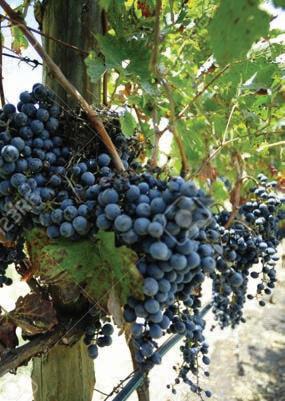
RETO = OPORTUNIDAD EN LOS VIÑEDOS
A primera vista, Querétaro no parece un buen lugar para un viñedo, de acuerdo con Tom Pence y su esposa Tiffany Pence, una representante de vinos de los EE. UU. que se mudó a Querétaro con Tom hace tres años.Tom ha trabajado en la industria del vino desde 1988.
En primer lugar, tenemos las lluvias en la temporada de cosecha, las cuales causan mildiú y disminuyen el azúcar en las uvas, lo que afecta el contenido de alcohol y el sabor.
“Muchos años, el 30 por ciento de la cosecha se perderá debido al mildiú”, afirma Tom.
En segundo lugar, hay grandes rocas volcánicas que hacen que las vides tengan dificultades para crecer, y esto tiene como resultado uvas más pequeñas.
Por último, la región tiene cambios bruscos de temperatura durante la temporada de cultivo: de 80°F durante el día a 50°F por la noche.
Quienes trabajan en los viñedos perciben los retos como
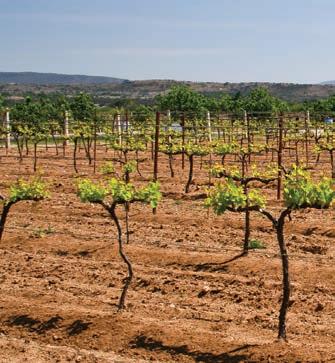
algo más que obstáculos. De hecho, Andrea Morena Durán, gerente de la bodega Vinaltura, donde se plantaron vides por primera vez en 2014, los considera un beneficio.
“Los vinos blancos y los vinos espumosos son los mejores debido a la lluvia y la acidez del suelo”, comenta Durán. “Hacemos fermentaciones reducidas para lograr una mayor calidad. Tenemos un clima extremo y una alta acidez, y esto es lo que hace especiales a los vinos de Querétaro”.
Vinaltura produce cerca de 40,000 botellas de vino al año, incluyendo vinos blancos como sauvignon blanc, chenin blanc y riesling, además de dos vinos rosados y seis tintos, que se añejan durante doce meses en barricas de roble francés o estadounidense y al menos seis meses más en sus botellas. Vinaltura cuenta con un pequeño restaurante y también ofrece visitas guiadas y degustaciones.
Tom Pence también destaca los beneficios.“Las uvas más pequeñas tienen una menor proporción entre cáscara y jugo. Esto da lugar a un vino con un sabor más intenso... vinos que son más elegantes y tienen una acidez más agradable, un estilo europeo más clásico”, explica. ¿Y qué hay del cambio de temperatura?
“Esto hace que el nivel de azúcar suba mucho durante el día, mientras que la acidez disminuye y, por la noche, el nivel de azúcar baja y la acidez vuelve a subir”, menciona Tom Pence. “Ese periodo de recuperación produce vinos que tienen más complejidad y también mayor acidez”.
Aproximadamente a una hora al este de Vinaltura se encuentra la Puerta del Lobo, una bodega que también tiene un hotel de cuatro habitaciones, además de dos restaurantes y un área de degustación de vinos ubicada en lo alto de una pequeña colina con una hermosa vista del campo de los alrededores. El primer viñedo de Puerta del Lobo, el cual tiene alrededor de tres acres, fue plantado en 2008 y cuenta con uvas cabernet sauvignon, merlot, syrah y tempranillo. Un segundo viñedo más grande, de aproximadamente 25 acres, fue plantado en 2015 para cultivar uvas como sauvignon blanc, merlot, malbec y syrah.
“Los vinos más interesantes del momento son los blancos y rosados”, afirmó Richard Hernández Jiménez, quien ha sido el sommelier de la bodega durante tres años. “Planeamos tener más tintos en el futuro. No tenemos mucho cabernet sauvignon porque la temporada de cultivo es muy larga y la probabilidad de que caiga granizo es mucha. Tiene una cáscara gruesa, así que está bien, pero tarda mucho en crecer”.
Aún así, Puerta del Lobo espera contar con su primer 100 por ciento cabernet este año.
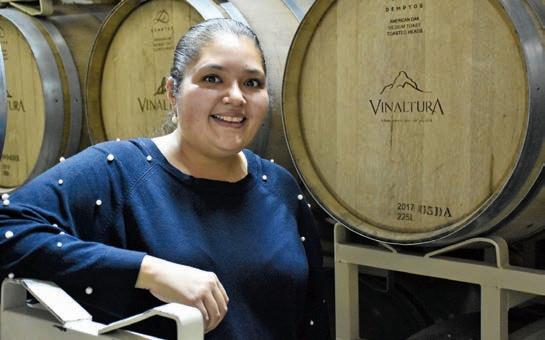
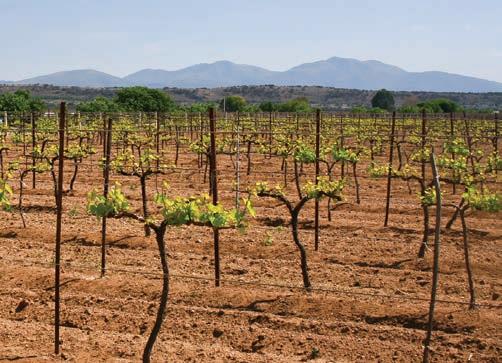
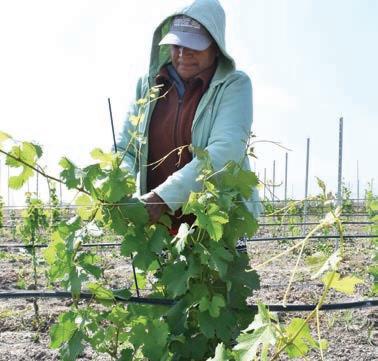
Andrea Morena Durán
PHOTO POR JOSEPH SORRENTINO
“LOS VINOS BLANCOS Y LOS VINOS ESPUMOSOS SON LOS MEJORES DEBIDO A LA LLUVIA Y LA ACIDEZ DEL SUELO. TENEMOS UN CLIMA EXTREMO Y UNA ALTA ACIDEZ, Y ESTO ES LO QUE HACE ESPECIALES A LOS VINOS DE QUERÉTARO”.
– ANDREA MORENA DURÁN, Vinaltura
PERCEPCIONES VARIABLES
El hecho de que la mayoría de los mexicanos no estén acostumbrados a tomar vino es otro obstáculo a superar.
“México tiene una cultura de cerveza y tequila”, dice Tom Pence.
Las bodegas saben esto y están haciendo lo que pueden para cambiar la percepción de la gente.
“Parte de mi desafío es educar a la gente y cambiar las ideas que tienen sobre el vino”, comenta Durán de Vinaltura. “Los mexicanos dicen que el vino es solo para las personas que saben de vino. Sin embargo, no es así. Por eso [en nuestros restaurantes] tenemos comida mexicana que se acompaña con vinos mexicanos. Creo que estamos cambiando la mentalidad de los mexicanos”.
Jovana García, supervisora de operaciones de Puerta de Lobo, está de acuerdo en que puede ser complicado que los mexicanos cambien su opinión sobre el vino. “Los mexicanos somos muy tradicionales y hacerlos probar cosas nuevas es difícil”, afirma. “Estamos acostumbrados a los dulces.
FOTO POR JOSEPH SORRENTINO
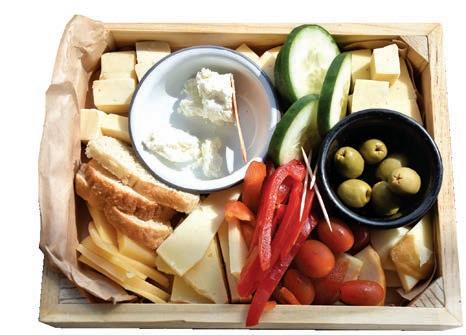
Una degustación de queso a Bocanegro
| ARTÍCULO Y FOTOS POR JOSEPH SORRENTINO | Como complemento de la creciente industria vitivinícola de Querétaro, están las pequeñas queserías que producen quesos artesanales que se encuentran a lo largo de la Ruta del Arte, el Vino y el Queso de Querétaro.
Cava de Quesos Bocanegro, que abrió hace 8 años, y Queso La Biquette, con tres años de antigüedad, son dos de esos productores locales.
Iñaki Tablado, que administraba una granja de ovejas y una quesería en España, llegó a México con la intención de jubilarse. Sus planes cambiaron y abrió Cava de Quesos Bocanegro, la cual ofrecía únicamente quesos frescos al comienzo.
“Empezamos con los quesos mexicanos básicos: quesillo , manchego y queso fresco”, comenta Yakoe Nicol Tablado, hijo de Iñaki y gerente de Bocanegro.
En 2015, construyeron una cava oscura (cueva) debajo del negocio y empezaron a producir quesos añejos. Actualmente, Bocanegro tiene de 15 a 20 tipos de quesos y ofrece recorridos y degustaciones de quesos.
“Es una sala de exhibiciones, pero también recrea las tradiciones europeas”, afirma Yakoe sobre la cueva que se mantiene a menos de 60 °F y 85 por ciento de humedad. “Diariamente, hay que voltear los quesos para asegurar que se añejen adecuadamente”.
Comenta que los quesos añejos no suelen encontrarse en los hogares mexicanos.
“Resulta difícil vender quesos añejos en México”, reconoce. “Estamos tratando de que los mexicanos conozcan mejor los quesos añejos, [que tienen] los sabores que realmente les gustan a los europeos. Creo que estamos teniendo éxito”.
Aunque Queso La Biquette lleva operando solo tres años, la dueña y veterinaria Isabel Esteve Denaives tiene cabras desde hace 15. “Me gustan las cabras”, responde cuando le preguntan la razón. Ella vendía leche, pero se dio cuenta de que no podía sobrevivir simplemente con eso. “Es un poco más sencillo tener un negocio que vende queso”, comenta.
Denaives, quien es franco-mexicana, pasó un año en Francia para aprender a hacer queso de cabra. Y, al igual que quienes trabajan en las bodegas de la zona, está presentando algo nuevo a los paladares de los mexicanos.
“Este tipo de queso no es común en México”, señala. “El queso de vaca es parte de la gastronomía mexicana, la gente cocina con esos quesos. Este queso es más para la mesa”.
La Biquette ofrece degustaciones con seis tipos de queso, que van desde el queso fresco suave hasta el Tomme añejo, el cual tiene un rico sabor terroso. Aunque no está certificado como orgánico, Denaives afirmó que no usa antibióticos ni conservadores. “Nuestros quesos son artesanales”, comenta. “Todo está hecho a mano”.
La educación también tiene una función en su negocio, al igual que en las bodegas.
“Tratamos de educar a los mexicanos sobre cómo comer y disfrutar este queso. Hace treinta años, nadie comía este tipo de queso”, menciona Denaives”. Ahora es más común. A la gente le gusta una vez que lo prueba”.
Yakoe Nicol Tablado en la cava El vino seco es diferente. En la mesa de los mexicanos, el ritual consiste en tomar refrescos, pero podemos [aprender a] tomar una copa de vino”.
En Puerta del Lobo, Jiménez intenta acercar a la gente poco a poco para que se acostumbre a vinos diferentes.
“Empezamos con los blancos, los más suaves como el sauvignon blanc, que es muy floral”, menciona. “Luego, pasamos a los rosados elaborados con malbec o syrah”. A pesar de los retos de cultivar uvas para vino en esta parte de México, nuevas bodegas están abriendo y las ya establecidas se están expandiendo, y muchas veces aprenden sobre la marcha.
“Algunos de los retos que enfrentamos son técnicos”, afirma Michelle Aydelotte, enóloga de Viñedos Dos Búhos, otro negocio en la Ruta del Arte, el Queso y el Vino de Querétaro. “Al ser una industria joven, sin mucha información histórica como referencia o ejemplos a seguir para preguntar sobre su experiencia previa con viñedos en el área, definitivamente somos pioneros. Lo que comenzó como un deseo personal de cultivar uvas a gran altura en el centro de México se ha convertido en el deseo de compartir nuestra historia de éxito con la mayor cantidad de personas posible”.
